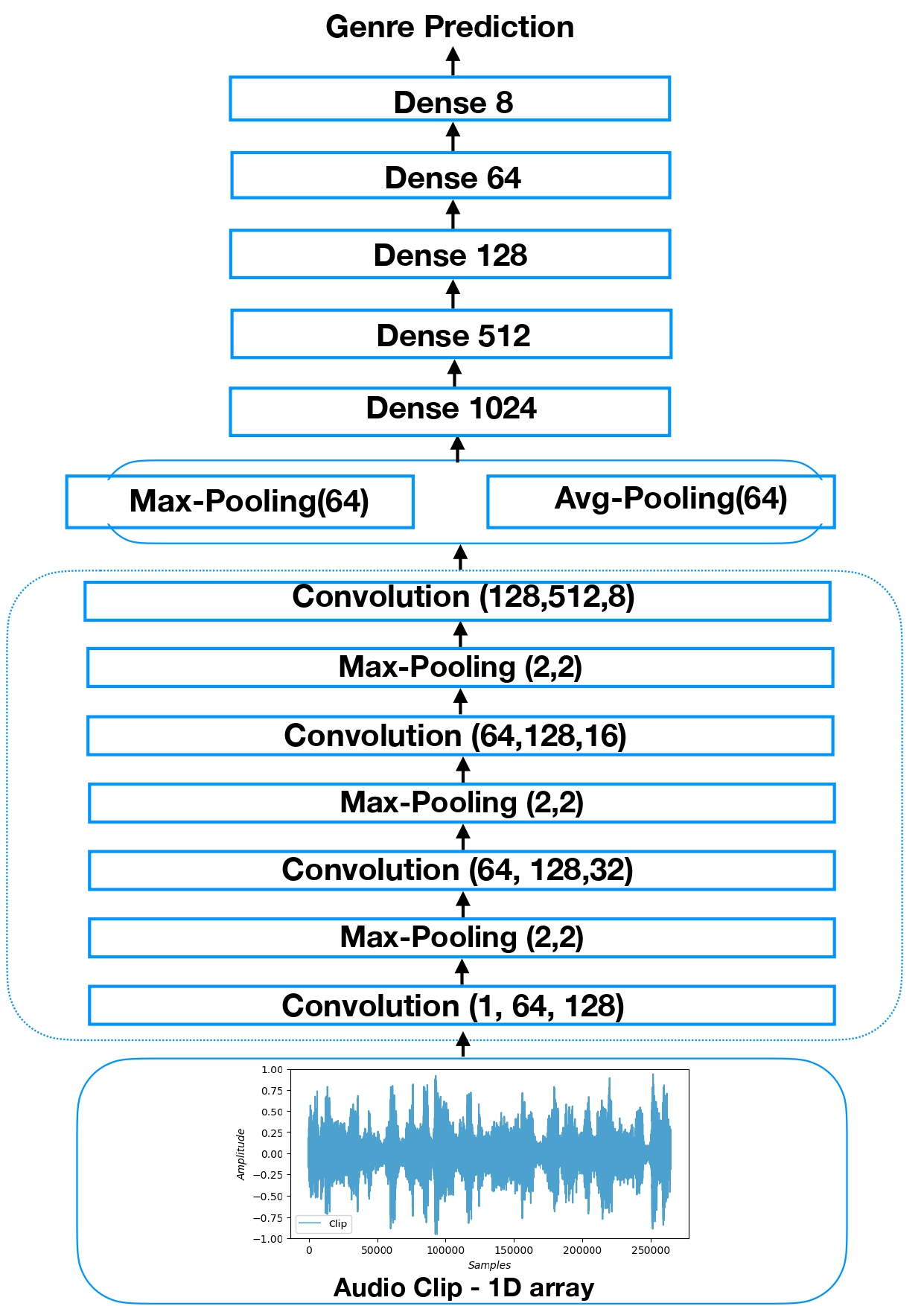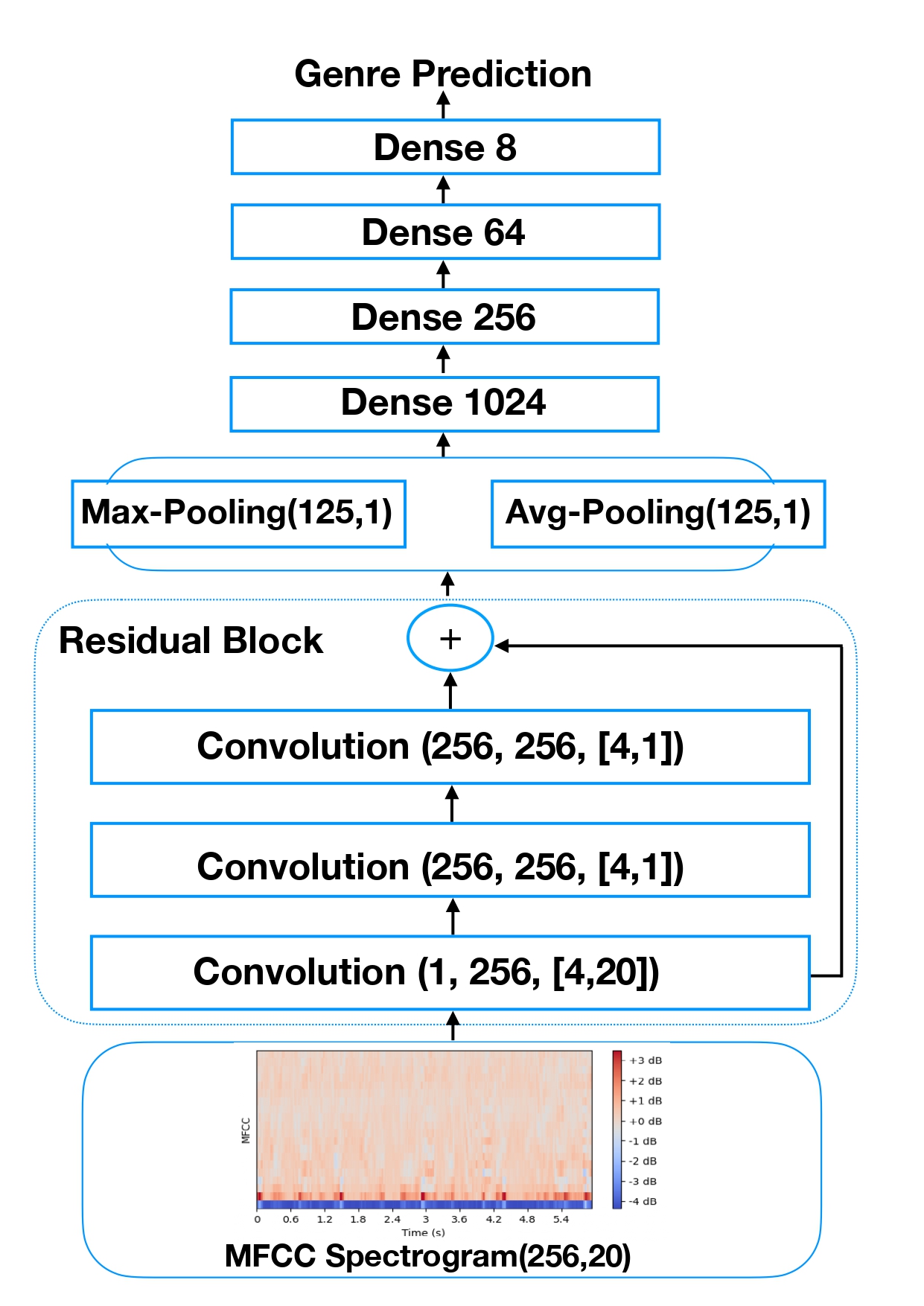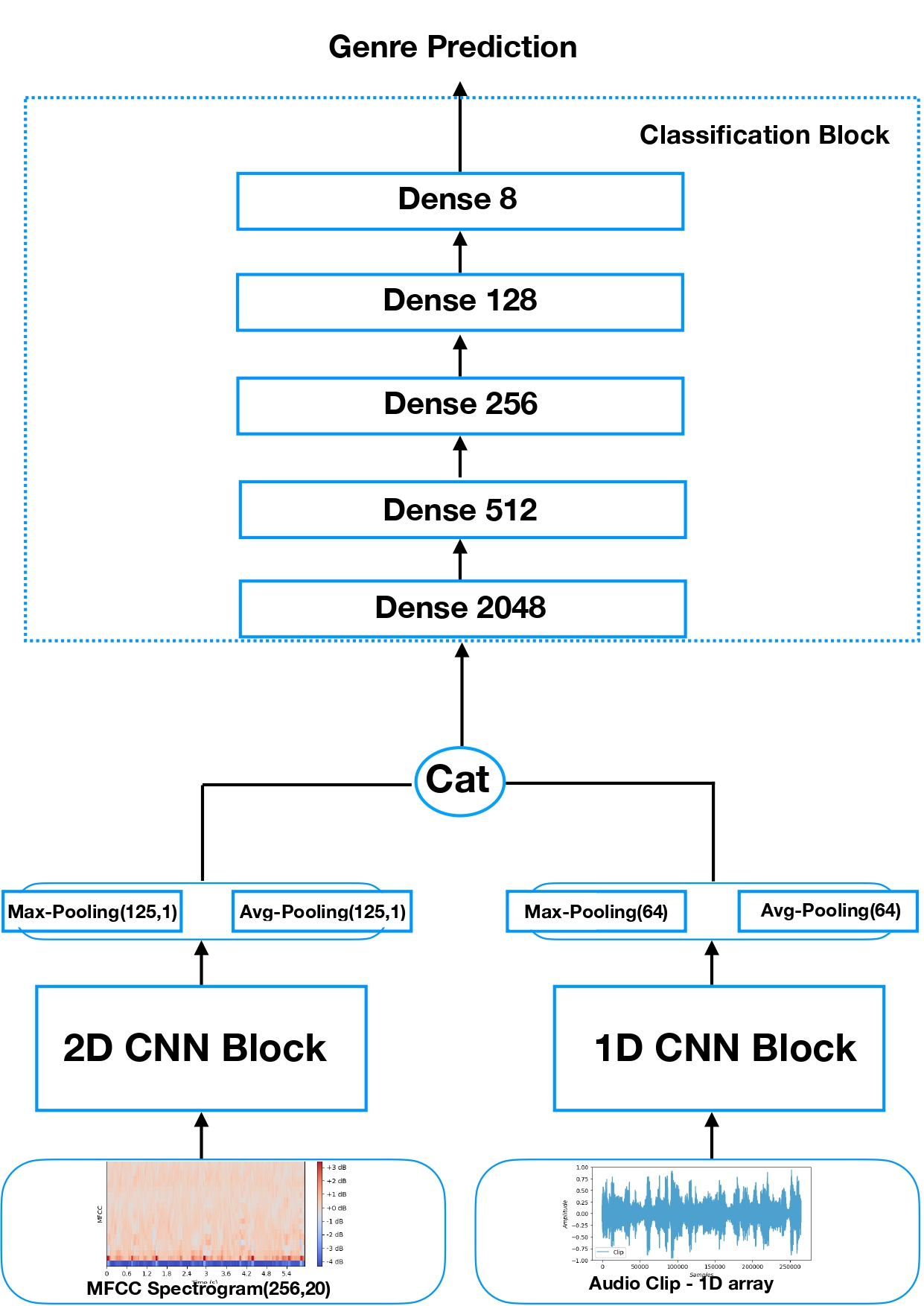We present a deep learning approach to solve the music genre classification task using the FMA dataset. Three different architectures have been developed in PyTorch, exploiting different representation of audio signals, namely 1D audio clips, 2D spectrograms and a mix of the two.
The models are trained on 8 different music genre classes and they reach the following final scores on the test set:
| Model | Accuracy | Cross-Entropy Loss | F1 Score |
|---|---|---|---|
| CNN1D | 47% | 1.73 | 0.33 |
| CNN2D | 51% | 1.70 | 0.38 |
| MixNet | 55% | 1.65 | 0.35 |
You can find a detailed report in the report.pdf (to be added soon).
Convolutional neural network using 1D audio clips as input data.
Residual Convolutional neural network using 2D spectrograms as input data.
This network exploits information from both 1D audio signals and 2D spectrograms. The CNN blocks are the 1D CNN and 2D CNN presented above.
In this repository you will find the following folders.
CNN1D: containing the files related to the neural network working with 1D audio signals.CNN2D: containing the files related to the neural network working with 2D audio signals.MixNet: containing the files related to the neural network working with both 1D and 2D audio signals.MGR: the python package needed to run all the files in this repository.
Begin by installing the MGR package. Open a terminal and go inside the MGR directory. Run pip install .. Remember to install the package again anytime you modify a file inside of it, otherwise the change won't be registered. Also, we advise to create a new environment starting from the file mgr_env.yml.
In each folder, you can find two .py files: one is named after the network that is used (e.g. cnn1d.py), the other is hypertune.py and it is used for the fine-tuning of the models. You will also find a lightning_logs folder, that is used by Lightining Pytorch to store useful data such as checkpoints. We advise to use tensorboard for plotting easily the results from the lighning checkpoints, and to use Optuna dashboard for the fine-tuning.


